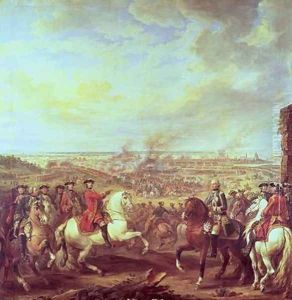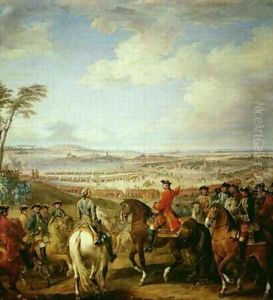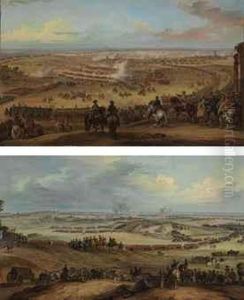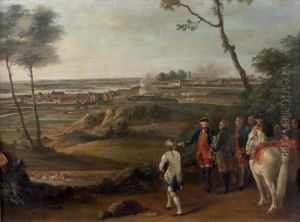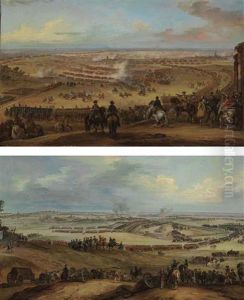Pierre Lenfant Paintings
Pierre Lenfant, born in 1704, was a notable French painter who made significant contributions to the art world during the 18th century. Despite not being as widely recognized as some of his contemporaries, Lenfant carved out a niche for himself through his distinctive style and the quality of his work, particularly in the realm of portrait painting. His life and career were emblematic of the artistic trends and cultural shifts of his time, offering insights into the broader context of European art history during this period.
Lenfant's early life is shrouded in some obscurity, but it is known that he received his artistic training in France, which was a center of artistic innovation and education during the 18th century. He honed his skills under the tutelage of established masters, learning the intricacies of painting techniques, composition, and the use of color. His talent and dedication soon earned him recognition, and he began to establish himself as a skilled portraitist, capturing the likenesses of the French nobility and elite.
Throughout his career, Lenfant exhibited his works at various salons and galleries, garnering admiration and accolades from both his peers and patrons. His portraits were celebrated for their realism, depth, and the ability to capture the personality and essence of his subjects. Beyond portraiture, Lenfant also explored other genres, including historical and mythological scenes, although these works did not achieve the same level of acclaim as his portraits.
Lenfant's artistic style was deeply influenced by the Rococo movement, which was prevalent during his lifetime. However, he managed to infuse his work with a sense of individuality, often incorporating elements of the emerging Neoclassical style. This blend of influences allowed his work to stand out, reflecting a transitional period in art history where tradition and innovation intersected.
Despite his contributions to the art world, Pierre Lenfant's legacy has been somewhat overshadowed by the more famous artists of his era. Nonetheless, his work continues to be studied and appreciated by art historians and enthusiasts for its quality and for the insights it provides into the social and cultural dynamics of 18th-century France. Lenfant passed away in 1787, leaving behind a body of work that, while not as prolific as some of his contemporaries, remains a testament to his skill and artistic vision.
